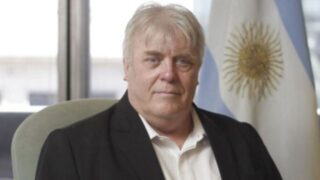There is an important difference between counter-cultists as heresy hunters motivated by sectarian reasons, and the more secular anti-cultists.
by Massimo Introvigne
Article 2 of 7. Read article 1.


In 1993, I published in a Danish magazine critical of “cults,” Update & Dialog, an article whose title was “Strange Bedfellows or Future Enemies?” It went through several reprints and versions. It proposed the idea that the genus of the movements opposing “cults” includes two different species, the “anti-cult movements” and the “counter-cult movements.” The anti-cult movements are mostly secular. The counter-cult movements are mostly sectarian. The article was criticized by some enemies of “cults,” as if my intention were to sow the seeds of discord in their camp. However, the terminology I proposed has now been widely adopted by scholars, and even by some critics of “cults.”
I did not argue that secular and sectarian critics of “cults” do not cooperate—after all, as the old saying goes, “the enemy of my enemy is my friend”—nor did I deny that they cross-fertilize each-other and may end up adopting similar arguments. What I meant is that both their origins and their goals are different.
Sectarian opposition to “cults” is, in fact, much older. From its early years, Christianity has opposed heresy. The word “heresy” derives from the ancient Greek haíresis, which means “choice.” It was used to indicate those who chose their own doctrines, with the implication that they were different from the doctrines of the Christian Church. The early Christians called, for instance, the Gnostics “heretics.” After the Constantinian turn of the 4th century CE, when Christianity became the official religion of the Roman Empire, “heresy” was listed as a crime, and “heretics” were executed. Similar concepts prevailed in other religions as well, including Islam, but the terminology is of Christian origins.
“Secta” in Latin was used as a synonym of “heresy,” with a Latin etymology deriving either from sequor, “to follow,” or from secare, “to saw,” meaning that by following heterodox leaders members of “sectae” were sawing themselves out of the mainline Christian Church. As mentioned in the previous article, today the Latin word “secta” and its derivatives in modern languages should be translated as “cult” rather than “sect.”
What the Christians criticizing the “cults” or “heresies” were stating was that they were dangerous because they proclaimed false doctrines. Occasionally, “cultists” or “heretics” were also accused of immorality, fraud, and even murder. However, the root of the criticism was theological. One could have been a law-abiding citizen and could still have been prosecuted and even executed for the simple fact of professing a “heretic” doctrine.


In the Catholic Church of the Middle Ages, “heresiology” became part of theology and was regarded as a science, whose experts were able to classify the different “heresies.” Later, Eastern Orthodox and Protestant heresiologists also emerged. Protestants were promptly attacked as “heretics” or “cultists” by Catholics, but they prosecuted “heretics” as well. The fate of Spanish theologian Michael Servetus (1509?–1553), burned at the stake in Calvinist Geneva for heresy, is just one example that heresy hunting was at work among Protestants too.
With the emergence of modern secular states, heresiologists no longer asked that heretics be burned at the stake, but they still denounced them as members of dangerous “cults.” One important point is that heresy hunters focused on “cults” that were successful, which they accused of “sheep-stealing.” “Cults” that did not represent a serious competition for the mainline churches were largely left alone.
Between the 19th and the 20th century, Christian counter-cultists focused on what they will eventually call “the four major cults”: the Seventh-Day Adventists, the Latter-day Saints (popularly known as Mormons), the Christian Scientists, and the Bible Students (which later evolved into the Jehovah’s Witnesses). The Jehovah’s Witnesses figured prominently in such 20th-century counter-cult classics as Jan Karel Van Baalen’s (1890–1968) The Chaos of the Cults (1938), Anthony Hoekema (1913–1988) The Four Major Cults (1963), and Walter Martin’s (1928–1989) The Kingdom of the Cults (1965). In fact, a survey by American scholar J. Gordon Melton concluded that in the 20th century the Jehovah’s Witnesses were the first target of the Christian counter-cult movement, based on the number of books published against them.


A look at these books immediately shows four main differences with what will later emerge at the secular anti-cult movement. First, the counter-cultists were (and are) pious conservative Christians with some theological training—many anti-cultists are secular humanists with a limited or no knowledge of theology. Second, while also mentioning some practices they regarded as harmful, such as the Jehovah’s Witnesses’ refusal of blood transfusions, classical counter-cultists focused more on creeds than on deeds—anti-cultists proclaim that they are not interested in creeds, only in deeds. Third, the aim of the counter-cultists was not simply to persuade “cult” devotees to abandon their faith. They wanted to bring them back to the conservative Evangelical fold. Fourth, counter-cultists tried to achieve their aims through lectures, publications, and preaching. They came from an Evangelical tradition jealous of religious liberty, and aware of the risks of involving the states in the repression of “cults.” Later anti-cultists asked for governmental support and put their faith in court cases and lobbying for anti-cult laws. In Catholic countries, Catholic counter-cultists had some differences with their Protestant counterparts, but the general attitude was the same.
When a secular anti-cultism emerged, religious counter-cultists were aware of the difference. Johannes Aagaard (1928–2007), a Danish Lutheran theologian, was one of the most famous European counter-cultists. In 1991, he launched a magazine critical of “cults” called Update & Dialog. In the very first issue, he wrote that, “the anti-cult movement is in trouble,” because it “tends to set the truth-question aside.” Secular anti-cultists, Aagaard wrote, insist that “they do not care about ‘creeds,’ only about ‘deeds.’” “This, Aagaard objected, is of course a distinction which cannot be upheld. One has to understand that a creed is a deed. And if one wants to stop the evil deeds one has to react already against evil creeds. But that makes an alternative creed necessary!” He also noted that no good purpose was accomplished if “cultists” were persuaded to leave the “cults” but not converted back to orthodox Christianity, and that the parents of “cultists” who had founded the anti-cult movements also objected to the involvement of their adult children in orthodox but high-demand Christian groups. The risk, Aagaard noted, was “that parents against cults are also parents against Christianity.”


Not surprisingly, it was Aagaard who asked me in 1993 to elaborate on the distinction between a Christian counter-cult and a secular anti-cult movement I had discussed in a conference, and published my first article on the issue in his Update & Dialog.
As mentioned before, the distinction does not mean that anti-cultists and counter-cultists do not influence each other. Several counter-cultists have imported themes born in the anti-cult movement such as “brainwashing” into their rhetoric. While anti-cultists focused originally on new religions born in the 20th century that recruited primarily young Americans and Europeans whose well-off families hated to see them “wasting their time” as religious activists or missionaries, eventually they imported from the religious anti-cultists targets they originally did not particularly care for, starting from the Jehovah’s Witnesses.
We have seen in recent years in the United States anti-cult activists such as journalist Tony Ortega or actress Leah Remini, whose main business was to criticize the Church of Scientology, opening a second front against the Jehovah’s Witnesses. The anti-Witnesses material they produce is of very low quality, and betrays a naïve attempt at becoming “experts” on the Jehovah’s Witnesses overnight. However, their activities confirm that the counter-cult and the anti-cult movements, while different, continue to cross-fertilize each other.









